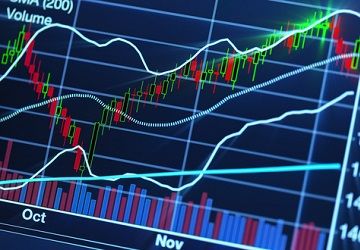Don't Assess Portfolio Performance with the Wrong Gauge
Many investors measure the success or failure of their portfolios based on the performance of a major index, such as the S&P 500. But this might not be the most accurate indicator. Many times, S&P gains arent reflected in individual portfolios. This is because the S&P 500 is market-cap weighted.

The S&P 500 might not be the best gauge by which to measure your portfolio's success.
Dentists routinely practice risk control in their practices. Investing is no different.
Ultimately, results are determined not just by what you get — investment returns — but also by how much risk you took to get them. This concept is referred to as risk-adjusted returns. Over the long run, taking too much risk means lower average returns because the birds of risk inevitably come home to roost.
The risks that many investors take are often affected by the gauges they use for determining the success or failure of their investment portfolios. Chief among these gauges are the major indexes. All too often, investors use the Standard & Poor’s 500, an index of large-company stocks, as a standard of comparison against their portfolios’ returns. The problem with this thinking lies in the way the S&P 500 is set up.
Let’s say that for the large-cap portion of his domestic stock portfolio, an investor owns equal dollar amounts of 40 large-company stocks, well-diversified across the 10 main market sectors. As many investors do, this investor keeps a close eye on the S&P 500’s performance to see how his stocks are doing by comparison.
He’ll be disappointed that often, when the S&P 500 rockets upward, he doesn’t enjoy these same gains. As a result, he concludes that he’d be better off selling his 40 stocks and instead investing in an S&P index fund.
But he’s not aware of the main reason for the S&P gains that he’s not enjoying. The S&P 500 is market-cap weighted, which means that the effect of the gains (or losses) of a member of that group on the index’s performance is based on the number of shares outstanding of that stock (its market capitalization). Stocks in this index with the largest market caps — such as Microsoft, Apple, Exxon and GE Z— thus have a disproportionate influence. So, it makes no sense to compare the results of this market-cap-weighted index to those of an equally weighted portfolio.
For purposes of risk management, this investor is better off with his equally weighted portfolio than with the S&P 500 because, when the of one of the largest members of the S&P 500 dive-bombs, it takes the rest of the index with it. Yet our hypothetical investor’s portfolio doesn’t decline as much, even if he owns shares of this same stock. The reason: Equal weighting means he doesn’t own a greater dollar volume of that stock than of others in his portfolio. Thus, his portfolio is subject to less volatility — the up-and-down movements in value that can play havoc with investment returns over time and threaten investors’ long-term prosperity and wherewithal for retirement.
Yet, as he is unaware of this principle, he might be inclined to sell his more risk-protective portfolio and instead invest in an S&P 500 index fund or ETF (exchange-traded fund). Then, his actual investment — not just his perception of how it’s faring — would be perennially subject to the fortunes of the few behemoth companies that determine the fate of that index. Investors make this same mistake regarding the Dow Jones Industrial Index, which is weighted by share price.
In chasing returns of weighted indexes over the long term, investors are like dentists who use an unproven product or recommend an elective, high-risk procedure. Just as these patients may suffer, so do investors’ long-term investment returns, impaired by overexposure to the volatility of the few stocks that are heavily weighted.
Investors go to a lot of trouble to assemble an equally weighted portfolio to protect against risk, or hire an advisor to do so. But then some, fixated on the S&P 500, are tempted by higher performance that they’re not getting — precisely because of their built-in risk protection.
Investors with well-diversified, equally weighted portfolios get risk-adjusted returns. Those who get distracted by the headlines of big gains in indexes may make the mistake of abandoning their risk protection to chase occasionally higher returns that cannot exist without higher risk that may soon punish returns.
So, investors shouldn’t lust after S&P returns in a quarter when the index gets a boost if they can’t handle the downside when a large company in the index tanks. It’s going to happen, and you can’t have it both ways. Instead of gauging how their portfolio is doing by fixating on the S&P 500 today, they should look at how it’s doing in the long run, keeping in mind that they might have received better returns but that this would have involved more risk — at levels that may have been unacceptable, depending on their tolerance.
Of course, stock portfolios should also include well-diversified groups of equally weighted small and midsize companies, as well as foreign stocks. And to assure diversification, investors should include in their total portfolios asset classes that don’t tend to move in the same direction as stocks, including bonds, real estate, commodities and alternative investments. Investors who do so will be diversified not just across the stock market but also across other asset classes and global markets.
David Robinson, a Certified Financial Planner®, is founder and CEO of RTS Private Wealth Management, an SEC-registered advisory firm in Phoenix, Arizona that provides fiduciary services to help pre- and post-retirement clients achieve their financial goals. He specializes in helping wealthy individuals — such as health care professionals, executives and professional athletes — prepare for the future by creating custom-tailored financial plans that employ a holistic approach including growing/protecting wealth, managing taxes, identifying insurance solutions, preparing for retirement and managing estate plans.